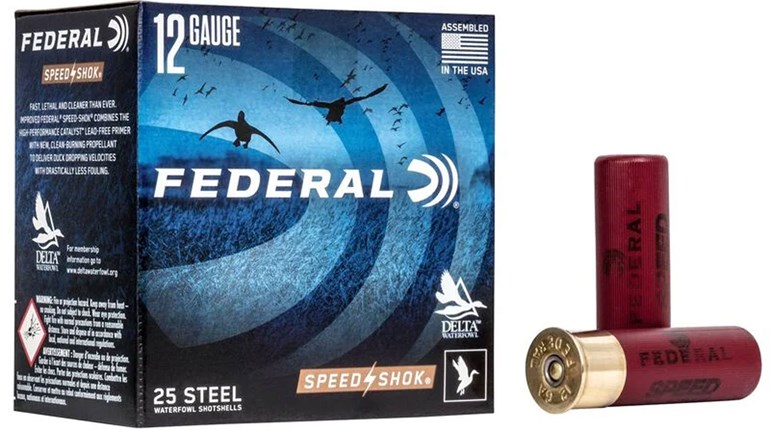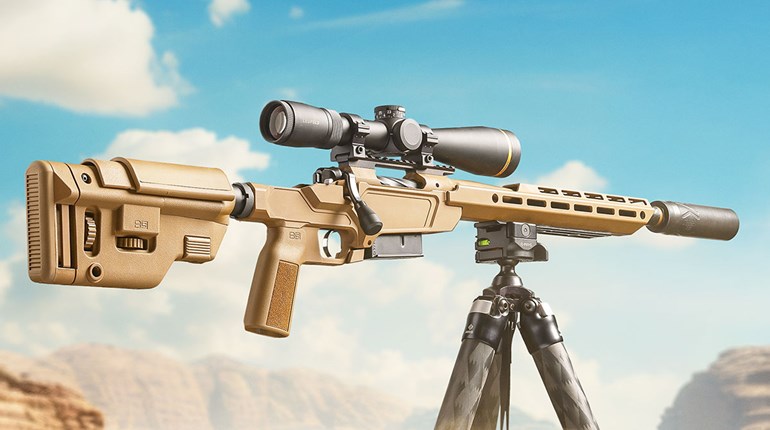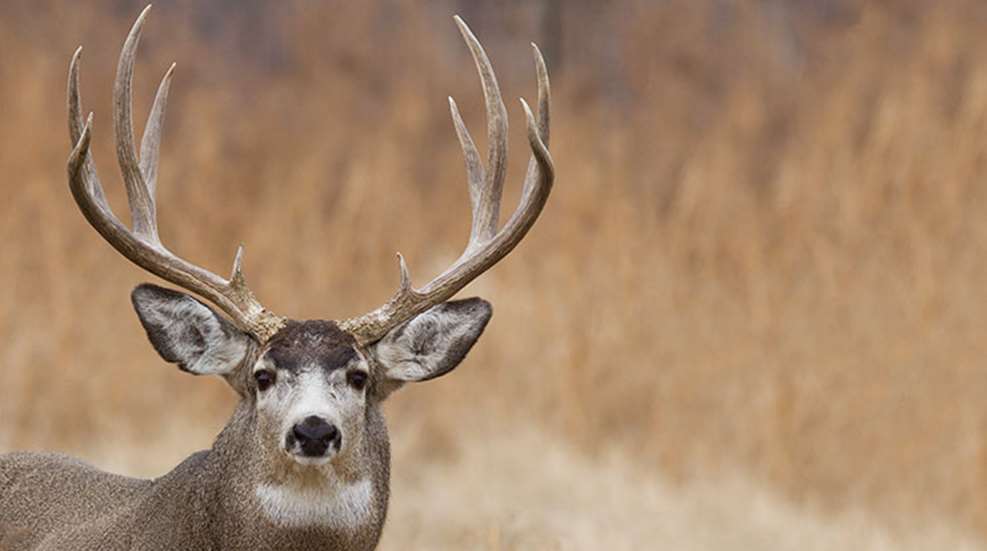
While assumptions can be dangerous things, I will stick out my cute and delicate neck to assume a couple of things here. If you are reading this I assume you are a hunter, and you like to read. So if you have not yet read Robert Ruark, you should.
Ruark was a master wordsmith who had a unique and brilliant way of making the page speak to you. Some of his best work revolved around hunting, with classics like Horn of the Hunter and The Old Man and the Boy. In my never humble opinion, very little American hunting literature can compare.
Ruark was a bit of a flawed character and he believed he was chasing Hemingway, so of course he focused on the kudu in Horn of the Hunter, where he wrote this wonderful passage: “There is nearly always a sardonic touch to the story of a kudu. You always seem to get him at the last hour of the last day, with the rains sweeping down from the south, the money and the time running out and the personal patience whetted to an unbelievable edge of irritability.”
He is not wrong. I have three kudu, all shot in the last hour of the last day and all with a story of tribulation. But I relate to this passage even more strongly with mule deer. I always seem to find myself in the last minute of the last hour of the last day when hunting mulies.
I remember one Montana buck that was standing a very long way off as the light faded on the final day of a frustrating hunt. The wind was blowing at gale force and while hindsight clearly shows I never should have taken the shot, it seemed like a good idea at the time. I held well into the wind, and the first shot didn’t even get his attention. I moved the crosshair back to the edge of his rump, and that time I saw him jerk his head back as the bullet buzzed past his nose. The next shot killed him with perhaps three or four seconds left in the hunt.
Another was in Nebraska on an equally frustrating hunt, but with a list of much different reasons. The setting sun of the final day was behind the buck, making him difficult to see. I shot him, and when I approached I experienced the most extreme example of ground shrinkage I have seen in my long hunting career.
A buck I shot on my last day in Colorado was a mule-deer/whitetail hybrid that also had a disappointing amount of ground shrinkage. The list goes on, but I think the point is clear. My mule deer stories always seem to have a sardonic touch with that whole “whetted to an unbelievable edge of irritability” thing happening.
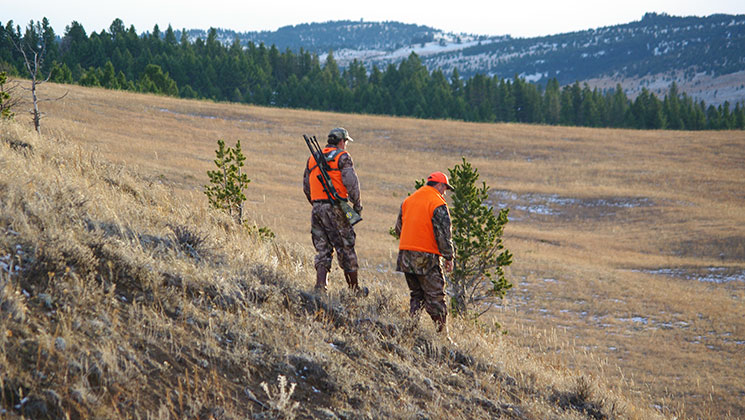
I know what you are thinking: Quit whining, last-minute deer are great. You get to experience the entire hunt and still have a happy ending. That’s true, and if I were strictly a words guy like Ruark or Hemingway it would indeed be the perfect ending to the perfect hunting story. But a modern-day outdoor writer has to wear many hats. It’s often said the most important aspect of selling a story is having great photos. The conventional wisdom parceled out to every up-and-coming writer is that while great writing will often be ignored if it lacks a photo package, great photos will sell even mediocre writing.
You do not create great photos shooting at night with a flash or, worse yet, the truck headlights. You also, as a rule, do not create them while hunting. Most are shot after the serious hunting is over. The ideal hunt for an outdoor writer ends with at least a day to spend shooting photos.
The other end of the spectrum is to shoot a deer the first morning. That gives you lots of time for photos, but no story to tell. I call myself a writer more so than a photographer and I love to paint with words, but you must have something in the memory bank to give flow to those words.
I have written some fiction, including a novel, and the freedom to just “make it all up” is empowering. But I pride myself on honesty in my outdoor writing. While it’s often a challenge to create an honest and compelling story when the story isn’t there, I do it by omission rather than by adding fiction. So perhaps the worst thing for any hunting writer to do is exactly what I did on a recent mule deer trip, when I shot a buck before what was supposed to be the first day of the hunt.
I didn’t even have my land legs yet. I dumped my bags, slipped on some boots and grabbed a rifle. I had left my house in Vermont that morning in the pre-dawn darkness and traveled nearly 2,500 miles to Montana, and then as darkness again covered the landscape my hunt was over. While hardly lyrical, it can only be described as the afternoon of the day before the “first” day. I hadn’t planned on starting to hunt until the next morning, but the hunt began immediately and was measured in minutes rather than days.
The thing is, this is hunting and there are buckets full of uncontrollable variables. We must deal with what comes, and when you have a grand old mule deer buck in your crosshair, it’s best to just pull the trigger, no matter how far you are into the hunt.
It’s those variables that make hunting writers old before their time. They come into the trade all fresh-faced and full of earnest wholesomeness, and a few years later they have a haunted, haggard, hollow-eyed look. Those gray hairs and vacant eyes are a result of constantly trying to make lemonade out of limes. Wilted, moldy, desiccated limes.
Many think this is the best job in the world and to be honest it is, but there are times that try your soul and times when it’s anything but easy. For me, those times too often revolve around mule deer hunting.
For an Eastern hunter the mule deer holds a certain mystique. Those of us of a certain age were infected with the hunting bug in the 1960s during the heyday of mule deer hunting. I can remember being a pre-pubescent, hunting-crazy kid wiggling in his seat while reading magazines filled with stories and photos of giant mule deer bucks. I lived in whitetail country, and at that time we grew quantity more than quality. For a kid used to seeing mostly spikes and forkhorns at the check station, those massive mule deer in the magazines looked like something out of a Dr. Seuss-induced fever dream. Mule deer were impossible. Deer like that could not exist. Back in that simpler time mule deer were as alien as little green men and the Rocky Mountains as exotic as Mars.
Several things changed. Travel became easier and those mystical places less distant. Mule deer hunting changed, too. While no longer like it was in “the good old days,” mule deer hunting became more accessible to Joe Average hunter; at the same time it got a lot tougher to find the giant 30-inch-plus bucks. One other big change was personal, and I found opportunities to hunt mule deer. I never forgot those giant bucks of the distant past and have been questing for one all my adult life. Like the great American writers with their kudu, the mule deer has tormented me with that love/hate thing for most of my long hunting career.
The mule deer, Odocoileus hemionus, is a critter of the deserts, prairies and mountains of the West. Its range is the western half of the North American continent from Alaska through Canada, the U.S. and well into Mexico. There are several subspecies, including the various blacktail deer. In fact, when I was hunting the tiny-antlered Sitka blacktail deer on Admiralty Island off the coast of Alaska I was technically hunting mule deer. However, the Rocky Mountain subspecies is the most common, is typically the one that grows those gag-causing antlers (although the desert mule deer can produce huge antlers as well) and is the deer I quickly hunted in Montana right after hopping off the plane.
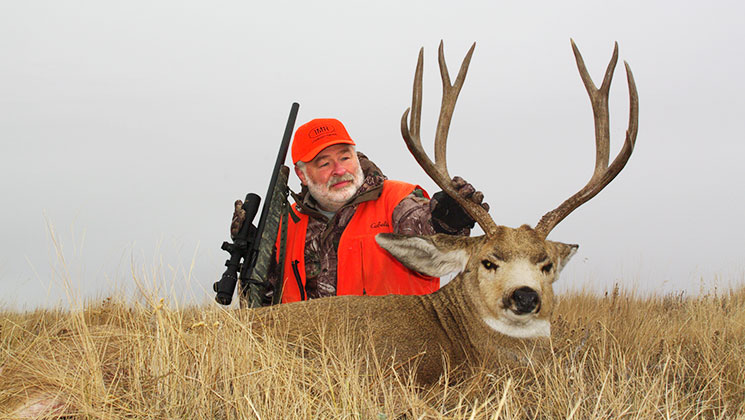
The mule deer is named for its large ears, which resemble those on a mule. The antlers are unique in that they usually bifurcate to grow in a forked pattern. Mule deer have a unique way of running called “stotting” where they push off the ground with all four feet at once, and bound up and down like pogo sticks. For an Easterner used to the graceful leaps of a whitetail deer, stotting leaves me thinking the goofy gene was dominant in the mule deer’s evolution.
I once encountered a herd of mule deer that had a young pronghorn antelope traveling with it. That antelope had adapted its companions’ style of running; when the herd spooked he would bound along, stotting with the rest of the deer. It was a gallant effort, but antelope are not designed or programmed to run that way and he lacked the timing of the mule deer. If you have seen the opening scene of “The Jerk” when Steve Martin is trying to dance, you have seen this antelope stotting. (It’s on YouTube—“The Jerk,” not the antelope.)
It’s often said that the mule deer is bigger than the whitetail. While our Northern whitetail harvest in the ’60s was mostly young bucks, there were enough old ridge-runners that dressed well over 200 pounds that as a kid reading about mule deer I pictured them to be nearly the size of Holstein heifers.
I was a bit disappointed when I finally made it across the deep Missouri River Breaks canyon to lay hands on my first mule deer. He was a fine specimen and I had taken him with what I thought was an outstanding display of shooting as he ran up that canyon wall, so far off that had we been back in New England he likely would have been in another state. But he was the size of an average whitetail buck, not the thick-shouldered, scale-busting giant I was expecting.
That was 30-some years ago and I have taken a pretty good share of both whitetails and mule deer since then, and I have realized the size of my first mule deer buck was not off the norm. The experts still say mule deer are larger and I believe them, but it’s not the great extreme I once believed it to be. I have not kept track, but my guess is the average weights of the two species are not all that far apart, at least with those I have shot. In fact, I’ll wager that my whitetail bucks would average a bit heavier. Sure, that’s because I have shot a lot more whitetails. Still, if I took my top 10 from both species, I don’t think there would be a big statistical difference. So when I made my first trip for mule deer so long ago and convinced my wife I needed a new rifle for a more powerful cartridge because they were much bigger, I might have been in error. But I did get a nice Remington Model 700 Classic in 7mm Remington Magnum out of the deal, so I ain’t complaining.
For my recent Montana mule deer hunt that lasted a single afternoon I used one of today’s most popular and prolific “whitetail” cartridges, the .308 Winchester. The rifle was a Bergara Custom BCR25 Long Range Hunter. Bergara and CVA, the muzzleloader manufacturer, are owned by the same parent company, and I was hunting with Chad Schearer, who handles PR work for the two brands. Given a choice, I would have picked a different cartridge for a hunt that had the potential for long-range shots. The rifle is available in just about any popular cartridge from .243 Winchester to .338 Winchester Magnum, including the .300 Winchester Magnum, which is one of my favorites for long-range work. It’s also offered in the newer hot-shot long-range cartridges like the 6.5 Creedmoor and 6.5-284. Even the .280 Ackley Improved is an option, which is another of my favorites.
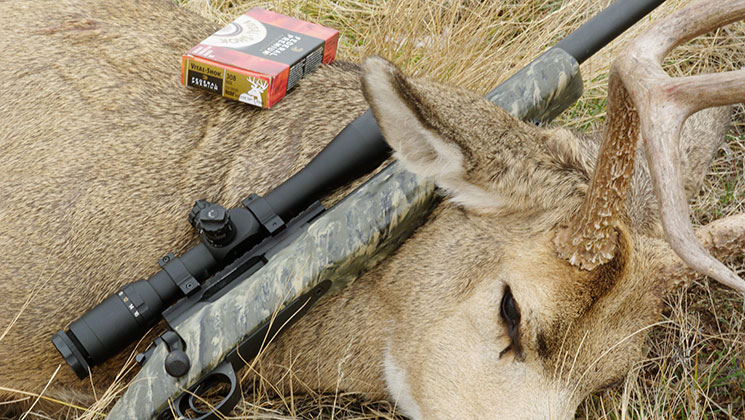
So many choices, yet I had the plain vanilla .308 in hand. Then again, when charged with Federal Premium ammo using 150-grain Nosler Ballistic Tip bullets, the .308 dropped the buck where he stood. I learned a long time ago not to argue with success, so in that light the .308 Winchester is a perfect mule deer cartridge.
Do you see what I have done here? I’ve written an article about mule deer hunting that was centered on my brief hunt. I made lemonade out of limes. If you read this far, I assume you enjoyed it and learned a thing or two about mule deer hunting. But assumptions can be dangerous things.













